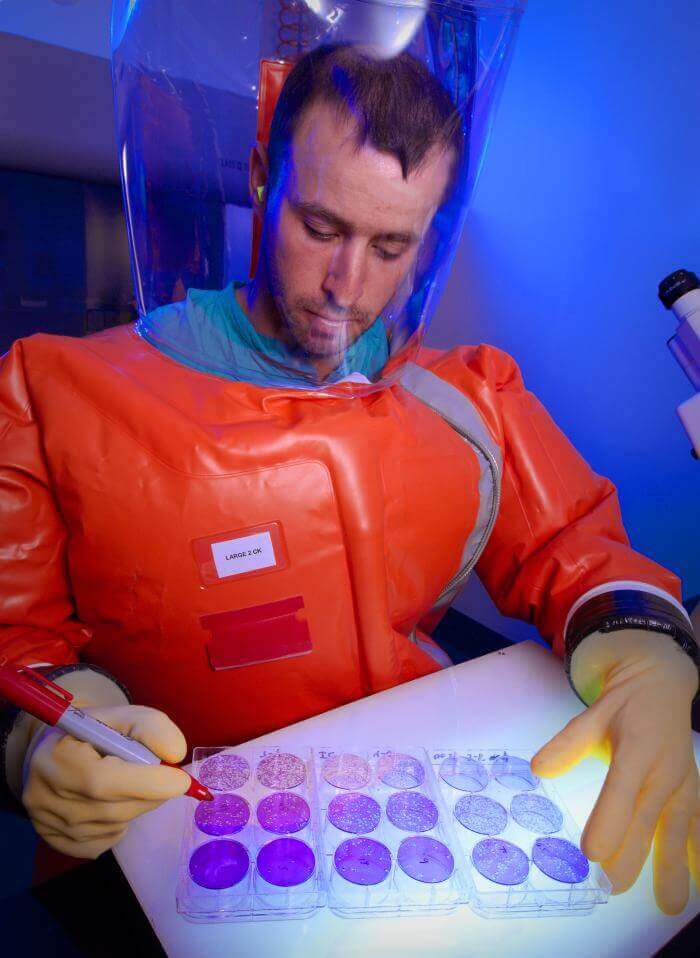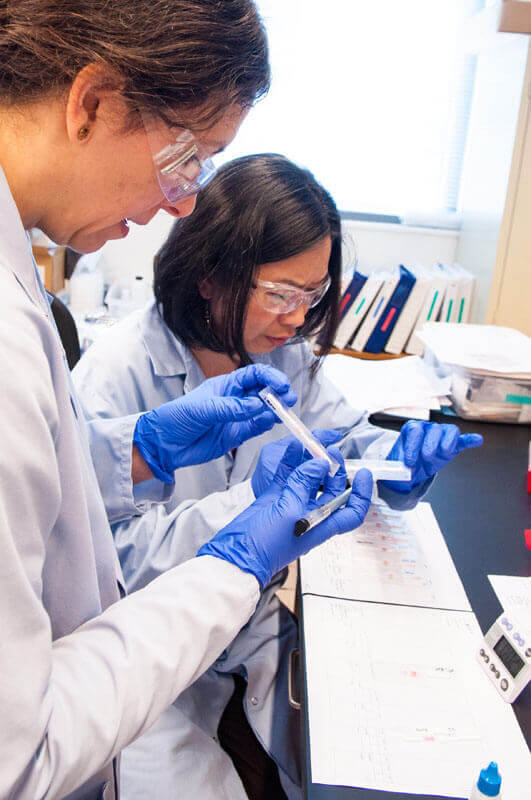2017 was a year that brought changes, upheavals, and uncertainties for the global health and development community: From the inauguration of a US president
that expressed skepticism about foreign assistance and beget uncertainty about the United States’ continued leadership in global health, to the election
of a new leader at the World Health Organization (WHO) that faces a tough task of reforming the agency and proving it’s up to the job in the wake of
missteps during the Ebola crisis.
While the landscape seemed to shift continuously under our feet this year, the community was also buoyed by evidence of our shared progress and success.
In developing countries, more women than ever have access to contraceptives. The end of polio is truly within sight. And we have the largest pipeline of promising global health technologies ever in history.
As the year comes to an end, GHTC is reflecting on the global health innovation stories and news that shaped 2017. Here are some of those moments:
1. Coalition formed to develop vaccines to prevent pandemics
The 2014 Ebola epidemic prompted some real reckoning by the global community and raised important questions on how we can be better equipped with the tools
and systems to stop outbreaks before they become epidemics. While the world still remains woefully unprepared, 2017 saw an important step forward with
the formation of the Coalition for Epidemic Preparedness Innovations
(CEPI). Launched with nearly $600 million in funding from the governments of Norway, Japan, and Germany, and in partnership with the Wellcome Trust
and the Bill & Melinda Gates Foundation, CEPI aims to develop vaccines against the diseases most likely to cause the next epidemic.
2. US global health and research funding saved from the chopping block
 CDC researcher handles pathogen in biosafety lab. Photo: CDC/ Dr. Scott Smith
CDC researcher handles pathogen in biosafety lab. Photo: CDC/ Dr. Scott Smith
The year started on an ominous note with the release of the Trump Administration’s fiscal year (FY) 2018 budget proposal, which called for deep cuts to US global health
and medical research programs for FY18 as well as proposed rescissions to the US Agency for International Development’s (USAID) global health funding
for FY17. While advocates feared Congress would take a cue from the Administration as it finalized FY17 budget negotiations, champions in Congress stepped up and defended these investments. When the dust finally settled, the FY17 omnibus budget passed with sustained funding across these areas, including slight boosts to global health funding at USAID
and the US Centers for Disease Control and Prevention, and a US$2 billion increase for the National Institutes of Health (NIH). While budget negotiations
remain ongoing for FY18, advocates are optimistic Congress will continue to sustain strong funding for global health and medical research.
3. G20 makes first-ever pledge to support R&D to combat global health challenges
The world’s wealthiest nations paid some serious lip service to advancing global health research and development (R&D) this year. In their 2017 summit
declaration, G20 leaders committed to working together to advance R&D for antimicrobial resistance (AMR) and potentially pandemic diseases—
marking the first time R&D for global health has featured on the G20 declaration. Leaders pledged support for coordinated R&D initiatives,
like the WHO R&D Blueprint and CEPI as well as called for a new AMR R&D collaboration hub. Although the G20 focused on R&D through the
lens of AMR and health security—which addresses only a portion of global health challenges—this was a good sign that the world’s leaders
are embracing the importance of health R&D to global development. It is now imperative that words turn into concrete action and that leaders sustain
this momentum as Argentina takes helm of the G20 in 2018.
4. Demise of an R&D pooled fund at WHO
Not all news can be good news. This year brought a disappointing resolution to an over decade-long effort to stand up a voluntary pooled fund at WHO
to finance R&D for neglected diseases. At this year’s World Health Assembly, WHO announced that it would cease work on the pooled fund and its initial round of demonstration projects—citing a lack
of contributions pledged to support the sustainability of the fund. While this is a disappointing end for global health advocates, on a positive
note, WHO pledged to continue a companion effort—the WHO Global Observatory on Health R&D—which was created to facilitate coordination
and guide prioritization for global health research.
5. WHO begins process to establish essential diagnostics list
 A PATH research examines onchocerciasis (river blindness) diagnostic tests. Photo: PATH/Patrick McKern
A PATH research examines onchocerciasis (river blindness) diagnostic tests. Photo: PATH/Patrick McKern
One of the biggest innovations of 2017 could be something decidedly low-tech: a list. While WHO has operated the Model List of Essential Medicines
for decades to guide countries in procuring drugs and treatments, this year a group of scientists asked an interesting question: If we have a list
for medicines, why don’t we have one for diagnostics? After a
sustained advocacy campaign, supported by GHTC, calling for WHO to establish an essential diagnostics list (EDL), the agency formally announced
in June it would create an EDL and took the first step in doing so, creating an expert advisory group tasked with developed the list. While
the list is not expected to be operational until early 2019, this welcomed move by WHO will improve diagnostic access and innovation and ultimately save lives.
6. Nonprofit-backed Chagas drug beats ex-“Pharma Bro” company’s bid for rival launch
Readers always like a David vs. Goliath story, and this one captured a lot of media attention this year. This August, in a surprising move, a creative multisector partnership involving GHTC member Drugs
for Neglected Diseases initiative (DNDi) successfully secured approval from the US Food and Drug Administration (FDA) for the Chagas drug benznidazole,
achieving this milestone before a rival attempt by a company formally run by Martin Shkreli (aka “Pharma Bro”) to register their version of the
drug. Under Shkrell’s leadership, this company announced plans to take benznidazole—a drug that has been around since the 1970s, but lacked
FDA approval—and register it with the FDA to secure a tropical disease priority review voucher (PRV) to sell. It also expressed plans to
its investors to then hike the price of the drug to nearly $1,000 a course (vs. the $60-$100 it’s now being sold at in Latin America). This alarmed
advocates who worried the drug would become prohibitively expensive to the nearly 300,000 Americans impacted by Chagas’ disease. This partnership
appears to be a win-win for both Americans and people around the world. The company involved in the partnership has committed to making the drug
accessible to Americans at an affordable price, and under a provision in the partnership agreement, 50 percent of revenue from a PRV sale will
be used to fund programs to expand access to the drug in the United States and other nations.
7. Innovators get creative in combatting the world’s deadliest animal
Bill Gates famously reminded us that the world’s deadliest animal is not a shark or a lion, but the pesky, yet lethal mosquito. This year innovators got particularly creative in exploring ways to wipe out these
deadly pests and the diseases they carry. Work continued on gene-drives, genetic modification of mosquitoes, and the introduction of the transmission-blocking Wolbachia bacteria. But scientists also tried to see if they could use mosquitoes rather than syringes to deliver malaria vaccines; created a crowd-sourced, mobile-based monitoring platform
to track disease-carrying mosquitoes by the sound of their buzz;
and innovated a way to introduce sterile mosquitoes into a population via temperature-controlled drone.
8. New global health technologies advance through pipeline
Over the past year, several other promising new health innovations have moved through the development pipeline and one step closer to reaching people
in need. Here are just a few highlights:
- A new low-cost, heat-stable rotavirus vaccine, ROTASIL—developed by GHTC member PATH—was found effective against severe rotavirus in Phase II clinical trials.
- A promising new HIV vaccine candidate that targets multiple strains of HIV—developed by Janssen Pharmaceutical Companies of Johnson &
Johnson as well as the NIH National Institute of Allergy and Infectious Diseases (NIAID)—entered human clinical trials. This marks only
the fifth time in history an HIV vaccine candidate has reached this milestone.
- The first vaccine specifically developed for leprosy entered a Phase I clinical trial, with results expected in 2018.
- A US Army-developed Zika vaccine candidate ZPIV performed well in three Phase I clinical trials, producing an immune response in more than 90 percent of participants.
- Building on the success of its monthly dapivirine microbicide ring, which is now under regulatory review, GHTC member the International Partnership
for Microbicides announced the launch of clinical trials for a three-month vaginal ring that releases both dapivirine and a contraceptive.
- NIAID also sponsored Phase I and II trials of a promising Chikungunya vaccine candidate. Currently there is no available vaccine for the disease.
- A new, anti-malaria compound—developed by Novartis and GHTC member Medicines for Malaria Ventures—entered clinical trials in nine countries in Africa and Asia. Partners hope this new drug will help stave off the development
of further malaria drug resistance and expects to complete Phase 2b studies by late 2019.
- A promising new oral therapy for sleeping sickness—fexinidazole—was found effective in curing the illness in Phase III clinical trials. The treatment—developed by DNDi and Sanofi—could
receive regulatory approval as early as the end of next year.
As we look forward to 2018, it is time for the global health community to redouble our efforts to make sure this vital progress in global health
innovation continues to ensure that people around the world will have access to lifesaving and life-improving health technologies.


